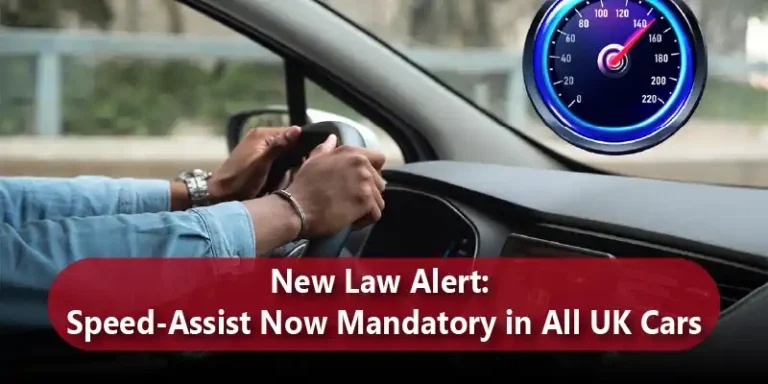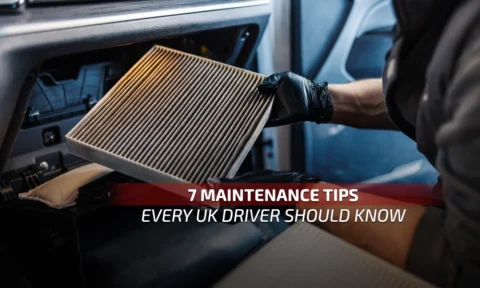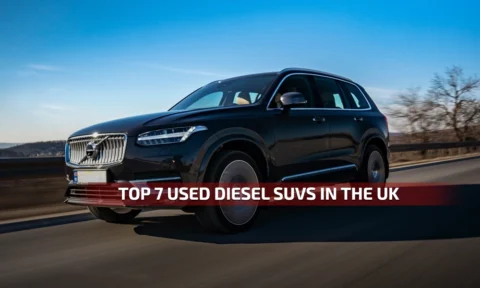As of November 5, 2025, the landscape of motoring in the United Kingdom changed forever. A landmark piece of UK government car laws has officially mandated the integration of Intelligent Speed Assist (ISA) systems in all new cars sold across the nation.
This new UK speed assist law is not merely an optional extra or a feature for high-end models; it is a compulsory inclusion, marking a definitive commitment to road safety that places UK car safety rules at the forefront of global best practice.
For UK motorists, particularly new car buyers, this is the most critical new driving laws UK update of the decade. The debate over whether to fully adopt this crucial vehicle safety technology is over. The era of Smart Speed Limiter Integration is here, and road safety campaigns are now urgently calling on drivers to embrace this life-saving co-pilot.
With a target audience seeking clarity and information, this guide will dissect the mandate, explain how Intelligent Speed Assist UK works, and show you exactly how to utilise this essential safety feature, which the government has finally made a car safety features mandate.
Decoding the Mandate: The UK Speed Assist Law in Detail
The move to make ISA mandatory is the final, decisive step in incorporating technology proven to reduce accidents and fatalities caused by speeding. This legislation formalises what was already becoming a de facto standard in many new vehicles following broader European standards (GSR2), but now, it is a non-negotiable legal requirement for all new vehicles sold in the UK from the November 5, 2025, deadline.
What is Intelligent Speed Assist?
The core of the mandate is the mandatory integration of Intelligent Speed Assist (ISA). This is not the simple, manual speed limiter you might find on an older car. ISA is an advanced driver assistance system (ADAS) that acts as a highly vigilant co-pilot, constantly monitoring the legal speed limit of the road you are on.
It achieves this through a high-tech combination of three systems:
- Traffic Sign Recognition (TSR) Cameras: Forward-facing cameras scan road signs, including temporary, variable, and fixed speed limit signs.
- GPS and Digital Map Data: The vehicle’s satellite navigation systems provide a pre-loaded, cross-referenced database of known speed limits.
- Real-Time Vehicle Data: Sensors measure the car’s actual speed precisely.
By fusing this information, the ISA system provides real-time feedback, ensuring you comply with UK motoring regulations.
How Smart Speed Limiter Integration Intervenes
The new UK speed assist law requires the ISA system to provide dedicated and appropriate feedback when the vehicle is exceeding the detected limit. Manufacturers have a choice in their implementation, but typically use one or a combination of these methods:
- Warning (Visual/Audible): A flashing icon on the dashboard and or a distinct audible chime to alert the driver.
- Haptic Feedback: The most common form of intervention. The accelerator pedal may vibrate or offer gentle resistance, nudging the driver to ease off the power.
- Speed Control Function: The system gently and temporarily reduces engine power until the vehicle speed drops back down to the detected legal limit.
It is paramount that UK motorists understand this system’s defining feature: the driver always retains ultimate control. If you need to accelerate quickly to overtake safely or avoid a hazard, you can override the ISA system instantly by pushing the accelerator pedal down firmly. This override capability is also a mandatory part of the UK car safety rules.
The Road Safety Campaign: Why Use Your Speed Limiters in Cars?
The immediate enforcement of this car safety features mandate on November 5, 2025, signals the government’s decisive action to tackle a persistent killer on our roads: excessive speed. Road safety campaigns and experts are unified in their plea to UK motorists to not just tolerate the technology, but to actively utilise it.
- Reducing Fatalities: Independent analysis estimates that the widespread use of ISA could save hundreds of lives and prevent thousands of serious injuries over the next decade. For a nation where speeding remains a factor in a significant percentage of road deaths, this mandatory speed assist 2025 is a crucial intervention.
- Preventing Penalty Points and Fines: ISA is the ultimate tool for avoiding accidental speeding. It removes the need for constant, anxious speed-checking, allowing drivers to focus on the road conditions while the technology handles the numerical limit adherence, keeping you safely within UK motoring regulations.
- Promoting Consistency: By encouraging drivers to maintain a consistent, legal speed, ISA not only improves safety but also promotes smoother traffic flow and reduces unnecessary acceleration and braking, leading to better fuel economy and lower emissions.
This new driving laws UK measure is a public health initiative disguised as vehicle tech, ensuring the vehicle itself acts as a safeguard against human error.
Adaptation in 2025: What New Car Buyers Must Know
For anyone buying a new car in the UK today, the mandatory integration of Intelligent Speed Assist means you are now purchasing a safer, smarter vehicle. Here is what you need to know:
1. It Defaults to ON
The mandate stipulates that the ISA system must be in its normal operating mode every time the vehicle’s ignition is activated. This means you don’t have to remember to turn it on it’s ready to assist you from the moment you start your journey.
2. Manual Deactivation
You can temporarily switch the system off during a drive if, for instance, you feel it is being inaccurate. However, the system will automatically reactivate the next time you restart the car, reinforcing the mandatory speed assist 2025 requirement. The process for temporary deactivation varies between manufacturers and should be checked in the owner’s manual.
3. The Human Element is Still Key
While the technology is advanced, ISA is not perfect. Its reliance on cameras to read signs can be challenged by:
- Damaged, obscured, or faded speed limit signs.
- Misreading signs on adjacent roads
- Out-of-date GPS map data in areas with very recent speed changes
The law is clear: the driver remains legally responsible for the vehicle’s speed. ISA is an assist feature. If it fails, you must rely on your own judgment to comply with UK motoring regulations.
Things You Might Wonder
Yes. Following the decisive update to the UK speed assist law, the mandatory integration of Intelligent Speed Assist (ISA) became effective for all new cars sold in the entire UK from November 5, 2025.
No. ISA is designed as a gentle intervention. It typically reduces engine power temporarily to slow the vehicle to the limit. It does not apply the brakes. Furthermore, the system can be immediately and easily overridden by pressing the accelerator firmly, as per UK car safety rules.
No. This mandatory speed assist 2025 rule applies only to new vehicles that are type-approved and sold after the November 5, 2025 deadline. UK motorists with older vehicles are not required to retrofit the ISA system.
No. The UK speed assist law mandates that the system must activate automatically every time the car is started. While you can temporarily switch it off during a journey, it will reset and be active the next time you turn the car on.
The primary benefits for UK motorists include a significant reduction in the risk of speeding-related accidents, fewer accidental speeding fines and penalty points, and improved fuel efficiency due to smoother driving assisted by the Smart Speed Limiter Integration.
ISA systems use both camera recognition and GPS mapping. On motorways with variable speed limits, the system is designed to read the electronic signs. While manufacturers are constantly improving accuracy, drivers must remain vigilant, as the final legal responsibility for adhering to UK motoring regulations rests with them.For more hacks or car tips, or to discuss how this new law is changing your driving, join the conversation at Ask about cars!







